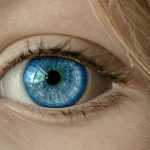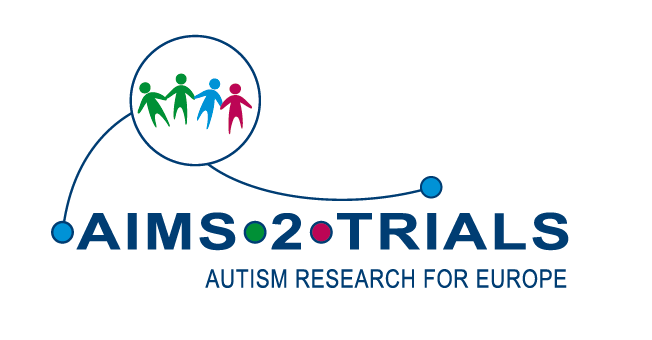 Extensive research has shown that autistic people mostly pay less attention to social cues compared to non-autistic people. Previous research has shown that on average, autistic people generally spend less time looking at faces, and especially eyes, during social situations. However, it is thought there may be variation within autistic people regarding these behaviours. Scientists have long thought that the ‘social brains’ of humans were essential to our evolutionary success, and therefore human behaviour is largely driven by social information. This has led researchers to suggest that perhaps autistic people consciously pay less attention to faces because faces are somehow less rewarding, meaningful, and or interesting to the autistic mind. Yet some autistic people have said this is not consistent with their experiences of social interaction.
Extensive research has shown that autistic people mostly pay less attention to social cues compared to non-autistic people. Previous research has shown that on average, autistic people generally spend less time looking at faces, and especially eyes, during social situations. However, it is thought there may be variation within autistic people regarding these behaviours. Scientists have long thought that the ‘social brains’ of humans were essential to our evolutionary success, and therefore human behaviour is largely driven by social information. This has led researchers to suggest that perhaps autistic people consciously pay less attention to faces because faces are somehow less rewarding, meaningful, and or interesting to the autistic mind. Yet some autistic people have said this is not consistent with their experiences of social interaction.
However, AIMS-2-TRIALS researchers have explored a different explanation for this difference in gaze behaviour. Perhaps autistic people actually process the sensory information coming from social situations differently. Whereas previous studies have looked at semantic content (i.e. the meaning of a stimulus, such as the eyes), this project is investigating the sensory salience (i.e. what sensory information ‘stands out’). The way the brain reacts to conspicuous information in the sensory environment (e.g. bright colours, contrast or loud sounds) is called sensory salience processing (SSP).
A previous study had investigated this theory of sensory salience processing, but they used static images which does not reflect real-world gaze behaviour. So for the first time, AIMS-2-TRIALS researchers used video clips to investigate this idea.
Processing sensory salience in the brain
The locus coeruleus (LC), which is Latin for ‘blue spot’, is a tiny area in the brain stem involved in the adjustment of stress responses. The LC produces nor-epinephrine (i.e. nor-adrenaline). Nor-epinephrine is the main neurotransmitter (‘chemical messenger’) of the sympathetic (‘fight-or-flight’) nervous system. Nor-epinephrine has the unique ability to amplify neuronal (brain cell) activity and emphasises the processing of sensory information. The LC, along with other brain areas affected by nor-epinephrine, are called the LC-NE system.
There is extensive research showing that spikes in activity in the LC brain region are related to the brief dilation of the pupils, in response to sensory salience.
This means that activity in the LC is a surrogate measure for sensory salience processing. And in turn, pupil dilation can be used as a proxy measure of activity in the LC. This technique of tracking pupil movements is useful because it is easy to use, even on young children. Young autistic children sometimes cannot tolerate the sensory feeling of an electroencephalogram (EEG) cap to measure brain activity, and Magnetic Resonance Imaging (MRI) machines are loud and require children to lie still for an extended time. Finally, it is not possible to track the LC brain region with an EEG, and difficult to track with functional MRI scans. This is because the LC is so small and has lots of blood vessels surrounding it.
The study
LEAP (the Longitudinal European Autism Project) is currently the world’s largest autism research study. In this latest study, AIMS-2-TRIALS scientists analysed eye tracking data from a large and diverse subset of LEAP participants, totalling 332 people aged 6-30 years. The study investigated the overall differences in gaze behaviour between autistic and non-autistic people.
To measure the changes in pupil dilation, the researchers used discrete remote cameras that sit in front of the computer: the eye tracker. This ensured that changes in pupil dilation resulted from changes in gaze behaviour.
Each person was shown a series of brief movie clips and cartoons from two categories: 1) with humans in social situations, or 2) without humans. None of the videos included speech.
Key findings
The researchers confirmed that autistic people showed a reduced pupil response (less dilation), compared to non-autistic people, when watching clips showing human social interaction. In addition, autistic people looked less at human faces, which is consistent with previous research showing less social attention in autistic people compared to non-autistic people, on average.
The researchers show that pupil responses were driven by sensory salience. The LC/NE system appears to react to sensory salience and seems to moderate this different gaze behaviour.
Autistic people also showed increased pupil responses to non-human scenes compared to non-autistic people. This could reflect increased sensory salience processing in autistic people for non-human stimuli, which could be interpreted as increased sensory processing of non-human details compared to non-autistic people.
The team also found differences in early pupil responses to stimuli versus late pupil response, between autistic and non-autistic people. This early finding raises an interesting area for future research. For example, the researchers suggest that this might be a compensatory measure – autistic people may pay more attention to faces after a delay. There are also other regions of the brain working alongside the LC/NE, so it may be that these other areas of the brain relate to the later stages of the gaze response.
Why is this important to the autistic community?
The findings of this study might provide some enhanced self-understanding for the autistic community because it provides possible reasons for why their gaze behaviour, and therefore how they process visual stimuli, may be different to non-autistic people. It shows that this difference is not conscious, and it could be that the differences in sensory processing that some autistic people experience could be related to their gaze behaviour.
Challenges
It is important to highlight that this is basic research to improve our understanding of autism, which is necessary before moving on towards clinical applications.
This study looked at group-level differences (autistic vs non-autistic people). A limitation to this study, despite the fact it is based on a large and diverse group of people, it does not fully reflect the diversity seen among the autistic community. The next stage would be to look at an even larger group of autistic people, to look at the variation within this group, and to see if there are subgroups with shared gaze behaviour patterns.
As an example, the data in this analysis indicated that there might be differences in social gaze behaviour between people at different ages and developmental stages. In particular, the researchers found that higher age was associated with a greater gaze focus on human faces.
What is next for this research topic?
This research helps show how sensory salience processing works and how it affects social gaze behaviour. Given that research into sensory salience processing differences is relatively new, it would be interesting to combine it with ‘social brain’ research. In the future, this might help guide clinicians in the best way to support people with particular sensory difficulties.
The study team are now looking to improve our understanding of the LC/NE system by extending their research to people with anxiety disorders and depression too. Using the ‘oddball method’, participants will be exposed to repetitive stimuli (such as a particular sound), which is infrequently interrupted by an anomalous (oddball) sound. By combining the participant’s reactions with eye tracking data and EEG recordings, the researchers can observe how the LC/NE system works differently across these different groups of people.
Reference: Bast, N., Mason, L., Ecker, C. et al. Sensory salience processing moderates attenuated gazes on faces in autism spectrum disorder: a case–control study. Molecular Autism 14, 5 (2023).







